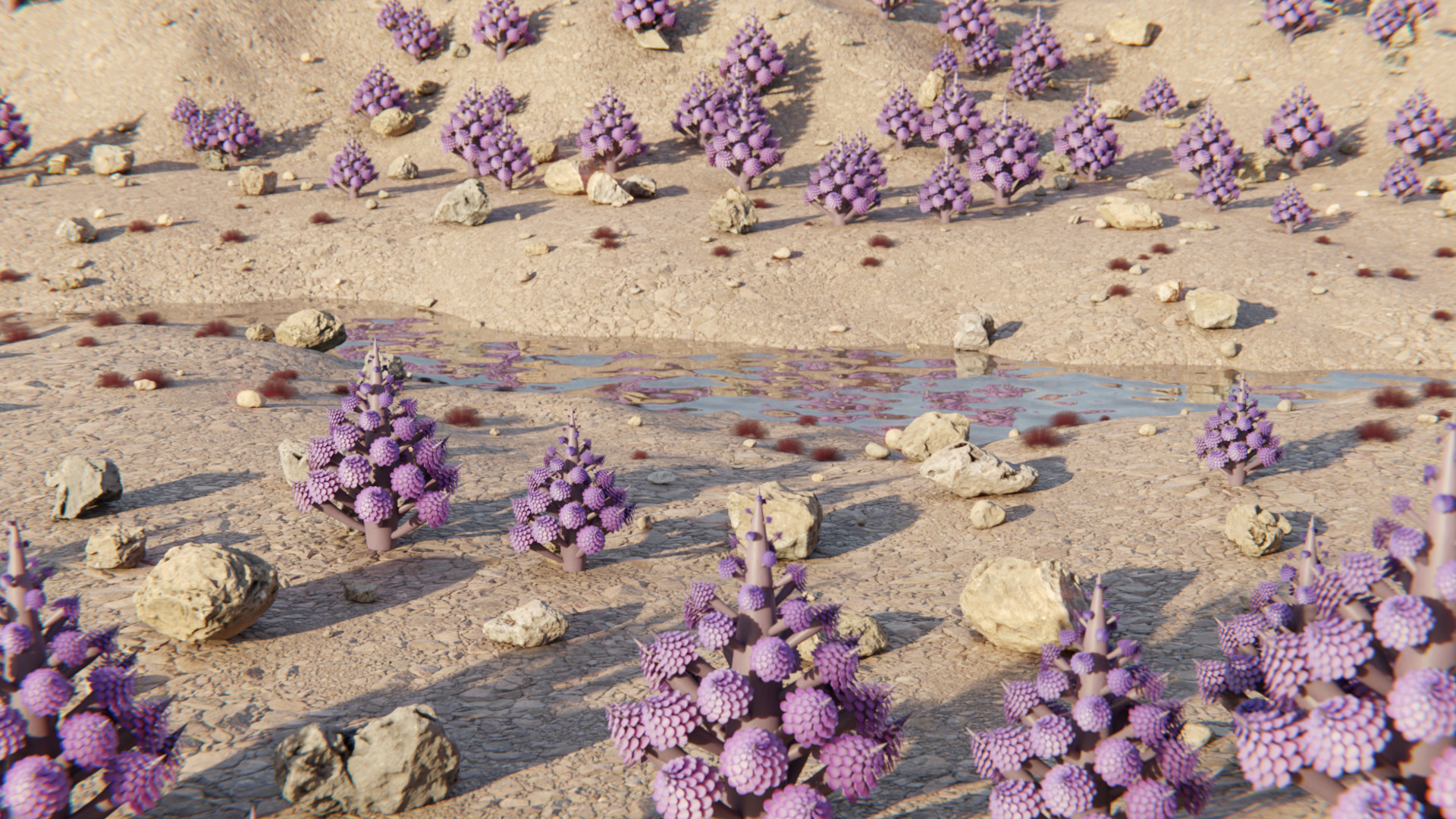Spiralbush
Humans are usually not great at math, and nature basically just doesn't even bother, yet it still often results in beautiful use of mathematically defined shapes. One such shape is called the Fibonacci spiral, in which multiple spirals can start from a central point and because they bend away from previous points at the golden ratio, φ, they can cover an entire surface with essentially no gaps. On earth this is clearly seen in sunflowers, and many other plants, including many succulents. On Almaishah the first known organism to hit this sweet spot of maximum surface coverage is the spiral bush of Yama. [Creature design by Dapper Dinosaur]
Basic Information
Anatomy
In its most basic structure the spiral bush is really not terribly different from boseo magno (Phytomicos magno). It consists of a stem, a bulb, and shoots that terminate in photosynthetic structures. The stem and the proximal bits of the shoots are now woody to a degree proportional to the length of the structure in question, with the stem being quite hard and somewhat brittle. There are two levels at which the spiral bush uses phyllotaxis spirals in which the angle defining the spiral is 1.618... radians. First the actual shoots of the organism form such a spiral if one were to look directly down on the plant, this ensures maximum surface area coverage for the shoots, allowing for maximum surface for photosynthesis with minimum waste in the form of self blocking of sunlight. The shoots themselves also produce petal like leaves that are also arranged in a phyllotaxis spiral, again allowing for maximum surface area. In both spirals the instances get smaller as they get closer to the center.
Genetics and Reproduction
During the spring the leaves shed spermatozoa, and adult plants form a bulb at the top of the stem. This bulb had indents which house female gametes. When the wind blows the male gametes some of them may come into contact with the female gametes of other spiral plants. After enough such gametes are fertilized, usually between half and three quarters, the bulb dries up, forming a husk and will break off, . This husk is very light and can be blown easily by the wind. As it bounces across the ground it will drop new plants off allowing the plant to spread to new areas.
Growth Rate & Stages
A new stem will start with no shoots, but soon new shoots will grow from the tip as the organism grows. Once it reaches about 500 cm it height it will then grow isometrically not growing new shoots.
The spiral plant has largely given up on vegetative growth from the root system.
Ecology and Habitats
Spiral plants live all across Yama anywhere there is open water or a high water table.
Genetic Ancestor(s)
Scientific Name
Phytospeira yamanensis
Origin/Ancestry
Retinalphyta
Average Height
Fullgrown organisms are approximately 1 meter tall
Geographic Distribution
Remove these ads. Join the Worldbuilders Guild











Comments